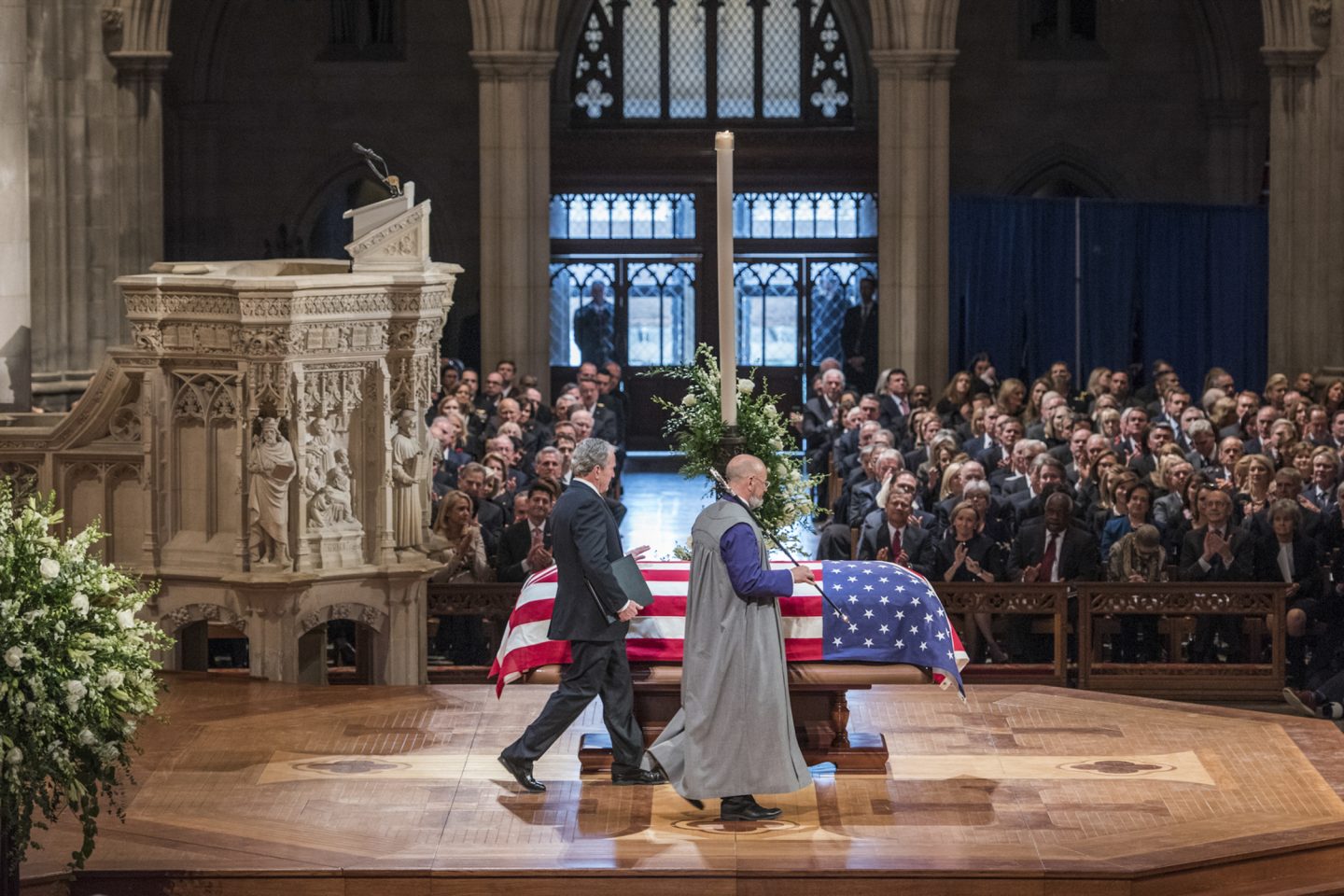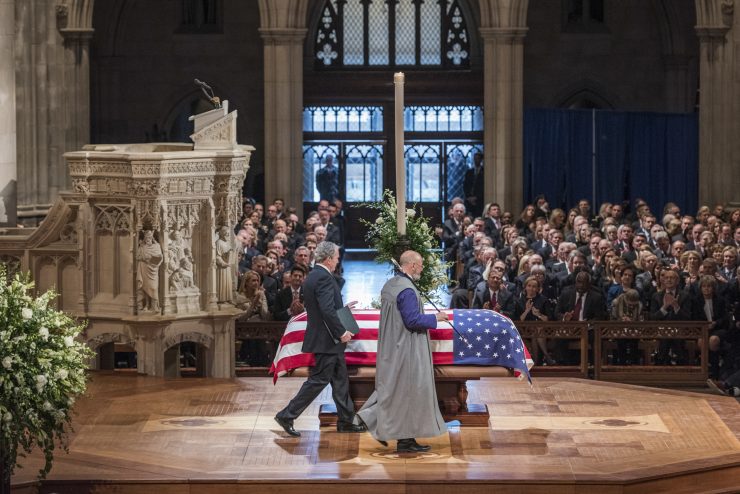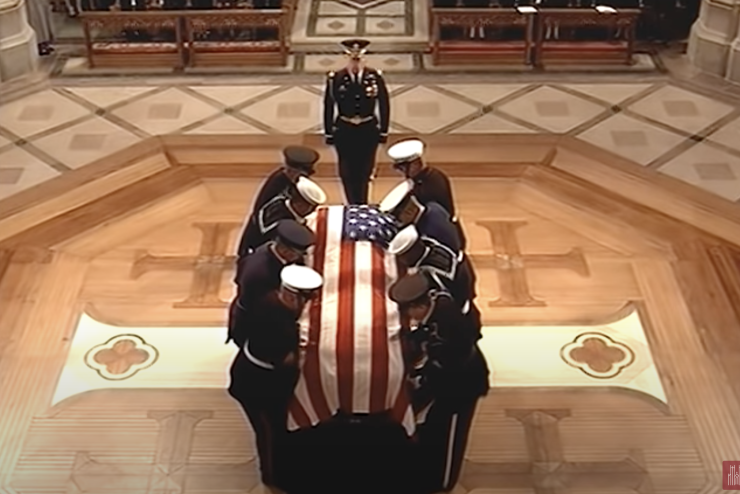
History
The idea for a sacred home for all Americans in the nation’s capital is as old as the country itself. Pierre L’Enfant’s original design for the new capital city included a “great church for national purposes,” an idea that sat idle until a congressional charter authorized a cathedral dedicated to religion, education and charity, in 1893. Construction began in 1907, when President Theodore Roosevelt helped lay the foundation stone. Through world wars, the Great Depression and immense social change, construction ended exactly 83 years after it began, when President George H.W. Bush oversaw the laying of the final stone atop the towers, in 1990.
The Cathedral is an active member of The Episcopal Church and is supported by generous donors from across the globe; we receive no direct support from the federal government or any national church body.
Cathedral Saints
Washington National Cathedral is officially known as the Cathedral Church of St. Peter and St. Paul. Here’s more about our patron saints.
Each year on June 22, the Episcopal Church celebrates the feast day of Saint Alban, a shadowy third-century Roman soldier in Great Britain who was decapitated for sheltering and professing the same faith as a persecuted Christian priest.
Saint Alban’s parish and St. Albans School for Boys, both located on the Cathedral Close, also commemorate this early British martyr, the patron saint of the “Mount St. Alban” on which the Cathedral stands.
Exactly one week later, June 29 marks the double feast of the Cathedral’s own patron saints, Saint Peter and Saint Paul. The name comes courtesy of the Rev. George William Douglas of St. John’s, Lafayette Square, who helped to draft a constitution for the nascent “church for national purposes.”
Long-established tradition records that Simon Peter, one of the Apostles, was the first pope; his name, meaning “rock,” occasioned Jesus’ remark that that disciple would become “the rock” on which he would build his church (Matthew 16:18). Paul, originally named Saul, was a Roman citizen who persecuted Christians before a powerful conversion experience on the way to Damascus in which he both lost and regained his sight (Acts 9). His letters to early Christian communities are among the earliest-dated Scriptures in the New Testament.
Peter and Paul were by no means perfect individuals. In addition to his cruel past, Paul claimed to suffer from a “thorn in the flesh” (2 Corinthians 12:7–10); Peter makes himself known for rash and impulsive nature in the New Testament rather than rocklike stability (Matthew 17:4–6; 26:75). Both martyrs’ very accessible humanity makes them ideal patrons for a Cathedral that prides itself as a house of prayer for all people.
The name of the Cathedral Church of Saint Peter and Saint Paul unites the memory of two powerful early fathers of Christianity who frequently have separate churches dedicated in their honor. Most powerfully, the unification of the two saints in Washington reflects the enduring ideal of reconciliation behind the National Cathedral, since Peter and Paul didn’t always agree on everything. The ideal of unity—between these two great apostles and among all people—is reflected in the prayers appointed for June 29:
Almighty God, whose blessed apostles Peter and Paul glorified you by their martyrdom: Grant that your Church, instructed by their teaching and example, and knit together in unity by your Spirit, may ever stand firm upon the one foundation, which is Jesus Christ our Lord; who lives and reigns with you, in the unity of the Holy Spirit, one God, now and forever. Amen.


